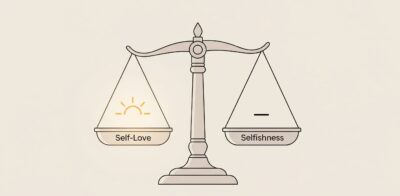Introduction
Self-Love vs Selfishness lies at the heart of our everyday choices, yet so many struggle to draw a clear line between nurturing ourselves and putting our interests above all else. Imagine feeling confident without guilt, caring for your needs without harming others, and striking the perfect balance between giving and receiving. In this article, you will discover practical steps to tell genuine self-love apart from harmful selfishness, supported by real-world examples, research insights, and actionable guidance—so you, too, can cultivate healthier relationships with yourself and those around you.
Table of contents
- Introduction
- 1. Understanding Self-Love vs Selfishness
- 2. How to Practice Genuine Self-Love
- 3. Recognizing Selfishness and Its Impact
- 4. Avoiding the Confusion: Self-Care vs Selfishness
- 5. Three Real-Life Examples of Healthy Self-Love
- 6. Three Real-Life Examples of Selfishness
- 7. Three Real-Life Examples of Common Confusion
- 8. Key Takeaways and Next Steps
- Conclusion : Self-Love vs Selfishness
- references
1. Understanding Self-Love vs Selfishness
Self-Love means treating yourself with kindness, respect, and compassion, whereas Selfishness involves prioritizing your desires at the expense of others. Although they both involve self-focus, the critical difference lies in intent and outcome. Therefore, to distinguish them, ask: “Am I caring for my wellbeing, or am I placing my needs above someone else’s right to well-being?”
2. How to Practice Genuine Self-Love
To cultivate authentic self-love, follow these steps:
2.1. Acknowledge Your Needs:
List three physical, emotional, and mental needs—then carve out time to meet them.
2.2. Set Healthy Boundaries:
Clearly communicate what you can and cannot do, thereby preventing resentment and burnout.
2.3. Cultivate Self-Compassion:
When you make a mistake, talk to yourself as a friend would; offer encouragement instead of criticism. These practical steps stem from Kristin Neff’s work on self-compassion (University of Texas, 2003) and the American Psychological Association’s 2019 report on mental wellbeing.
3. Recognizing Selfishness and Its Impact
Selfishness often hides behind reasonable-sounding motives—yet its hallmark is neglect of others’ rights or feelings. Common signs include:
3.1. Chronic Boundary-Breaking:
Ignoring others’ limits to fulfill personal desires.
3.2. Lack of Empathy:
Dismissing or minimizing others’ suffering.
3.3. Manipulative Choices:
Using guilt or pressure to get one’s way. Over time, these patterns erode trust, fuel conflict, and isolate the individual.
4. Avoiding the Confusion: Self-Care vs Selfishness
Many conflate taking a personal day with shirking responsibility or pursuing a passion with self-absorption. To avoid this mix-up:
4.1. Pause and reflect:
“Is my action renewing me or leaving someone else worse off?”
4.2. Seek feedback:
Ask a trusted friend if they feel respected and considered when you make decisions.
4.3. Review outcomes:
Note whether relationships improve (a sign of true self-care) or suffer (a red flag of selfishness).
5. Three Real-Life Examples of Healthy Self-Love
5.1. Example 1: Prioritizing Rest After Burnout
After six months of nonstop deadlines, Aisha, a project manager, noticed she was snapping at colleagues. Therefore, she booked two days off, turned off notifications, and spent time journaling her goals. As a result, she returned calmer, more creative, and her team welcomed her renewed energy.
5.2. Example 2: Saying “No” to Overcommitment
Omar, a community volunteer, realized saying “no” to every request left him exhausted. Thus, he reassessed his cap, agreed only to two activities per month, and used the freed-up time to attend therapy. Consequently, his contributions became more focused and impactful.
5.3. Example 3: Investing in Skill Growth
Fatima always wanted to learn graphic design but felt guilty taking evening classes. Then she created a rotating schedule—two evenings for study, two for family. Over three months, she mastered key tools, boosting her confidence and streamlining her work tasks.
6. Three Real-Life Examples of Selfishness
6.1. Example 1: Ignoring Family Needs for Personal Pleasure
Khalid spent weekends gaming for eight hours straight, even after promising his children park visits. They felt neglected, and family bonds weakened. Here, his choices prioritized fleeting entertainment at others’ expense.
6.2. Example 2: Exploiting Team Members for Recognition
Sara, a team lead, took sole credit for a group project so she could secure a promotion—despite promising to acknowledge contributions. Her peers grew resentful, and collaboration stalled.
6.3. Example 3: Hoarding Resources in a Crisis
During a local flood, Bilal stocked up on essential supplies far beyond his needs, leaving neighbors scrambling. His actions highlighted self-preservation without regard for community welfare.
7. Three Real-Life Examples of Common Confusion
7.1. Example 1: Social Media Break vs Abandoning Friends
Leila logged off social platforms for mental health. Yet, when friends organized an online support group, she hesitated to rejoin. They felt excluded, though her intention was self-care. Open communication resolved the misunderstanding.
7.2. Example 2: Career Advancement vs Stepping on Others
Youssef negotiated a higher salary by highlighting his achievements, unintentionally overshadowing a colleague’s contributions. His firm stand on compensation was healthy, but lack of acknowledgment caused friction.
7.3. Example 3: Family Distance vs Selfish Independence
Nora moved abroad to pursue a dream career. Her family worried she prioritized ambition over family ties. She balanced independence with regular check-ins and visits, clarifying that self-growth need not sacrifice family bonds.
8. Key Takeaways and Next Steps
- True self-love enriches both you and those around you; selfishness isolates.
- Before each decision, ask: “Does this renew me without harming another?”
- Practice clear communication, boundary setting, and empathy to maintain balance.
Conclusion: Self-Love vs Selfishness
By distinguishing genuine self-love from harmful selfishness, you empower yourself to thrive alongside others. Start small: set one boundary today, reflect on its impact, and build from there. Over time, you’ll craft a life where personal wellbeing and respect for others walk hand in hand—translating insight into action.
references
Warning: The provided links lead only to the specified content. Other areas of those sites may contain material that conflicts with some beliefs or ethics. Please view only the intended page.
- Kristin Neff (2003) – Defines self-compassion’s components: kindness, common humanity, mindfulness.
https://self-compassion.org/wp-content/uploads/publications/SCtheoryarticle.pdf - Neff, Rude & Kirkpatrick (2007) – Links self-compassion to wellbeing and personality traits.
https://self-compassion.org/wp-content/uploads/publications/JRPbrief.pdf - Self-Compassion Wikipedia – Overview of self-kindness, common humanity, mindfulness.
https://en.wikipedia.org/wiki/Self-compassion - Verywell Mind (2023) – Practical steps to reduce selfish behavior.
https://www.verywellmind.com/how-to-stop-being-selfish-7096599 - University of Wollongong (2024) – Explains healthy self-love vs narcissism.
https://www.uow.edu.au/media/2024/self-love-might-seem-selfish-but-done-right-its-the-opposite-ofnarcissism.php


















